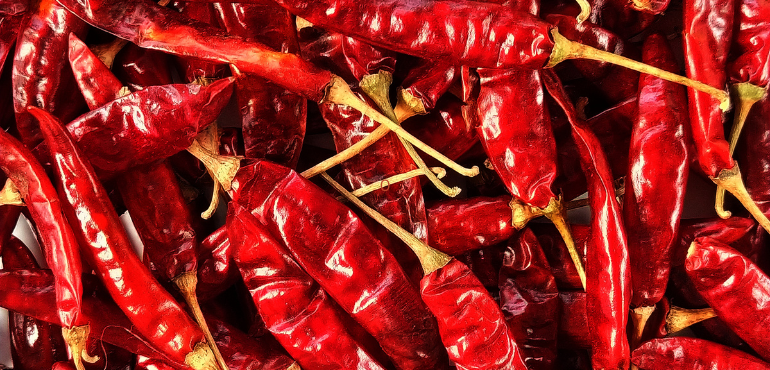Unlocking the Global Market: Export Potential of GI-Tagged Red Chillies from India
Unlocking the Global Market: Export Potential of GI-Tagged Red Chillies from India
India has long been recognized as a global leader in spice production, and among the most valued spices are red chillies. In recent years, increased attention has been drawn to Geographical Indication (GI)-tagged red chillies, due to their unique qualities and origin-specific attributes. The potential for these chillies to be exported has been significantly enhanced by the credibility that GI certification provides.
What Are GI-Tagged Chillies?
GI-tagged red chillies are produced in specific regions and are known for characteristics that cannot be replicated elsewhere. Through the GI certification process, these attributes are officially recognized, and legal protection is granted to their names. Examples of such chillies include:
-
Guntur Sannam Chilli from Andhra Pradesh
-
Byadgi Chilli from Karnataka
-
Kashmiri Chilli from Jammu & Kashmir
-
Khola Chilli from Goa
Each of these has been associated with a distinct flavor profile, heat level, and color, making them highly desirable in international markets.
Export Advantages of GI-Tagged Chillies
1. Global Recognition and Trust
A GI tag is perceived as a marker of authenticity. By international buyers, it is often viewed as a guarantee of quality and origin. As a result, greater trust is placed in GI-tagged products, and a higher willingness to pay a premium is often observed.
2. Premium Pricing and Value Addition
Higher prices can be commanded by GI-tagged chillies compared to their non-GI counterparts. In foreign markets, these chillies are often categorized as gourmet or specialty ingredients, which allows them to be positioned as premium products.
3. Export Incentives and Support
Support for the export of GI-tagged products has been extended by Indian government agencies, such as APEDA. Participation in international trade fairs and financial incentives for exporters have also been encouraged. Infrastructure is being developed to facilitate cold storage, quality control, and transportation.
4. High Demand in Global Cuisines
Significant demand is being generated by global cuisines that rely heavily on Indian spices. GI-tagged chillies are frequently used in sauces, seasonings, processed foods, and health supplements. Their distinct qualities are being sought by chefs, food manufacturers, and ethnic food markets worldwide.
Challenges in the Export Process
Although potential is high, several challenges must be addressed:
-
Limited Awareness: In many markets, knowledge about Indian GI products remains limited.
-
Quality Consistency: Variability in cultivation practices can lead to inconsistent product quality, which may be viewed negatively by buyers.
-
Compliance Requirements: Strict quality and safety standards are enforced by many importing countries. Adherence to pesticide regulations and residue limits must be ensured.
-
Supply Chain Gaps: Efficient logistics, processing, and traceability systems are required to maintain product integrity, and these are still being developed in many producing regions.
Strategies for Export Enhancement
1. Awareness Campaigns
Awareness about GI-tagged chillies can be spread through digital marketing, trade delegations, and food expos. A unified brand identity for Indian GI spices can also be promoted.
2. Capacity Building
Farmers can be trained in best agricultural practices, and assistance can be provided in securing necessary certifications. This would ensure quality and traceability across the supply chain.
3. Processing and Packaging Improvements
Value can be added by converting chillies into powders, extracts, or ready-to-use blends. Shelf life and marketability can be increased through modern packaging methods.
4. Collaboration Between Stakeholders
Export potential can be enhanced through joint efforts involving farmers, producer groups, exporters, and government bodies. Better coordination and infrastructure support can lead to smoother operations.
Conclusion
The global spice trade has been increasingly influenced by demand for authentic, high-quality, and origin-specific products. GI-tagged red chillies from India are uniquely positioned to fulfill this demand. Their export is being seen not only as an economic opportunity but also as a means to preserve traditional agricultural knowledge and regional heritage.
By continuing to invest in quality assurance, international marketing, and logistical support, India’s GI-tagged chillies can be made to reach kitchens around the world—where their heat, color, and flavor will continue to be celebrated.

